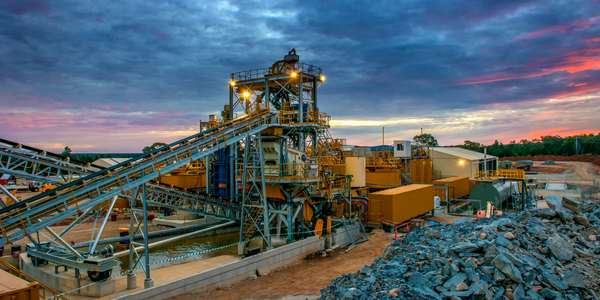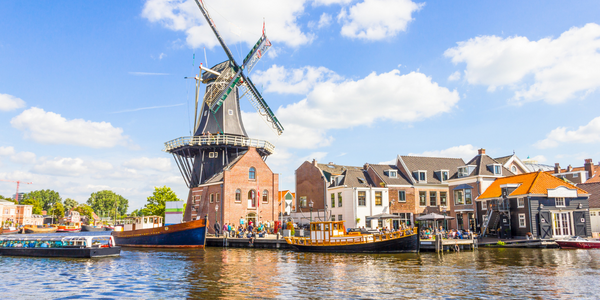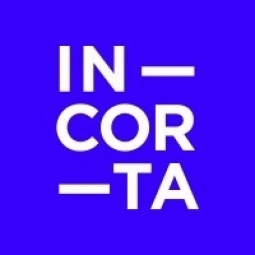Technology Category
- Analytics & Modeling - Real Time Analytics
- Functional Applications - Manufacturing Execution Systems (MES)
Applicable Functions
- Sales & Marketing
Use Cases
- Real-Time Location System (RTLS)
- Track & Trace of Assets
Services
- System Integration
About The Customer
Al-Watania is a large manufacturing company with over 10,001 employees. The company operates in the manufacturing industry and relies heavily on data and reporting to monitor its operations and make informed decisions. The company previously used a BI solution that was slow and often delivered inconsistent data, making it difficult for the team to stay on top of operations. The company's IT team had to rely on multiple SAP applications to develop the requested dashboards, which were often complicated and difficult for business users to navigate. This situation strained the company's IT resources and made it difficult for the company to operate efficiently.
The Challenge
Al-Watania, a manufacturing company with over 10,001 employees, was facing significant challenges with their previous Business Intelligence (BI) solution. The system was slow, often delivered inconsistent data, and made reporting unreliable. The process of accessing data and creating reports and dashboards was crucial for the company to monitor its operations effectively. However, the slow data loading and query execution times made real-time dashboard running virtually impossible. The IT team had to rely on multiple SAP applications to develop the requested dashboards, resulting in complicated user interfaces. This complexity made it difficult for business users to navigate the system, further straining the already costly IT resources.
The Solution
Al-Watania implemented Incorta, an analytics platform that provided robust reporting and dashboards, drawing from all corporate data systems. The platform integrated with other BI visualization tools and was accessible to over 50 business users across the organization. Incorta uses direct data mapping for data sourcing, eliminating unnecessary parts of ETL and enabling business users to generate reports independently. Data from multiple enterprise sources, including SAP software, could be integrated to create up-to-the-minute reports, enabling real-time action. This solution empowered business users to create their own reports and dashboards easily. The CEO could monitor the performance of all functions through daily, weekly, and monthly dashboards. The manufacturing and operations team could monitor various parameters of livestock in real time to reduce loss and maximize productivity.
Operational Impact
Quantitative Benefit

Case Study missing?
Start adding your own!
Register with your work email and create a new case study profile for your business.
Related Case Studies.

Case Study
IoT Applications and Upgrades in Textile Plant
At any given time, the textile company’s manufacturing facility has up to 2,000 textile carts in use. These carts are pushed from room to room, carrying materials or semi-finished products. Previously, a paper with a hand-written description was attached to each cart. This traditional method of processing made product tracking extremely difficult. Additionally, making sure that every cart of materials or semi-finished products went to its correct processing work station was also a problem. Therefore, the company desired an intelligent solution for tracking assets at their factories. They also wanted a solution that would help them collect process data so they could improve their manufacturing efficiency.

Case Study
Goldcorp: Internet of Things Enables the Mine of the Future
Goldcorp is committed to responsible mining practices and maintaining maximum safety for its workers. At the same time, the firm is constantly exploring ways to improve the efficiency of its operations, extend the life of its assets, and control costs. Goldcorp needed technology that can maximize production efficiency by tracking all mining operations, keep employees safe with remote operations and monitoring of hazardous work areas and control production costs through better asset and site management.

Case Study
Leading Tools Manufacturer Transforms Operations with IoT
Stanley Black & Decker required transparency of real-time overall equipment effectiveness and line productivity to reduce production line change over time.The goal was to to improve production to schedule, reduce actual labor costs and understanding the effects of shift changes and resource shifts from line to line.

Case Study
Buoy Status Monitoring with LoRa
The Netherlands are well-known for their inland waterways, canals, sluices and of course port activities. The Dutch Ministry of Infrastructure indicates that there are thousands of buoys and fixed items in and near water environments that would profit from IoT monitoring. One of the problems with buoys for example, is that they get hit by ships and the anchor cable breaks. Without connectivity, it takes quite some time to find out that something has happened with that buoy. Not to mention the costs of renting a boat to go to the buoy to fix it. Another important issue, is that there is no real-time monitoring of the buoys at this moment. Only by physically visiting the object on the water, one gains insight in its status.
Case Study
IoT Based Asset Tracking System
The existing system used by the customer could only track a few thousand assets and was able to generate only a few standard set of reports. As the number of assets tracked grew exponentially, the system started to break at the seams. The Tracking devices were from different manufacturers following different protocols. There was no proper integration among the devices to send instant alerts. There are thousands of tracking devices spread across multiple geographies, that are moving. The configuration and troubleshooting of these devices incurred heavy costs, which was a logistics challenge. The existing system did not provide sophisticated Analytics, Business Intelligence and Insights from the data








